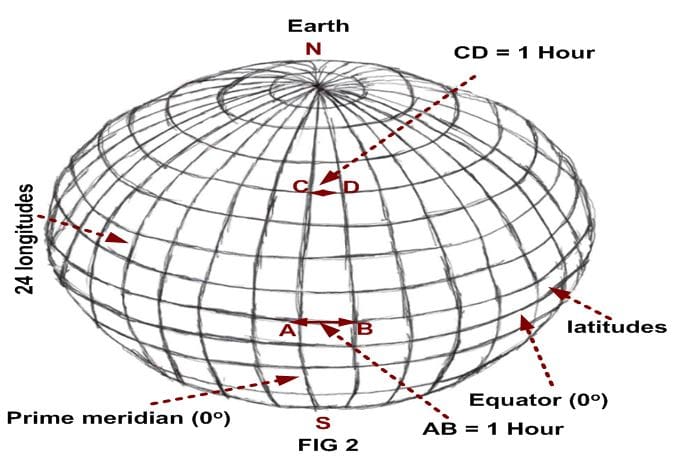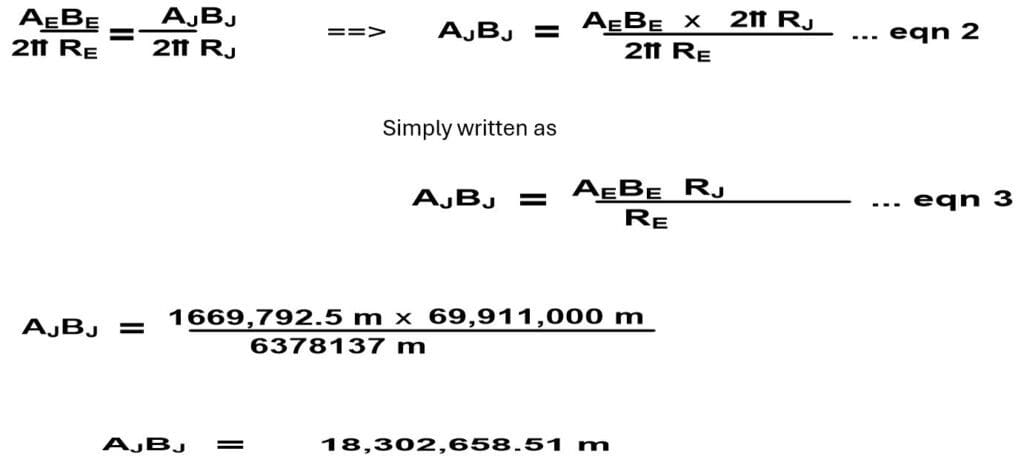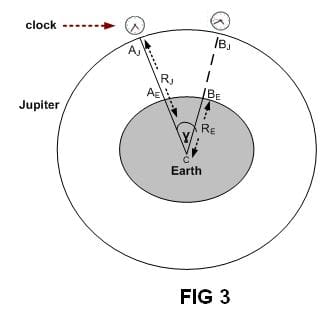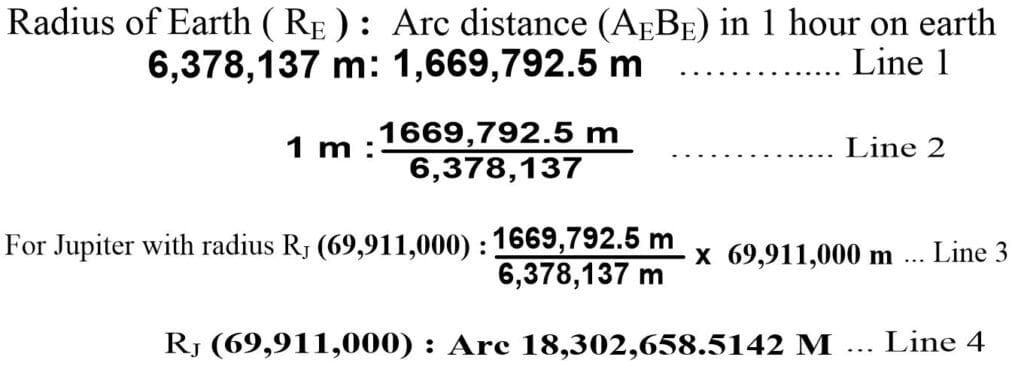Time-Is-Universal
In the Quest for Unification of Gravity and Quantum Physics
James K. Kakaire
Kakaire.com
Copyright @ April 2024 by James K. Kakaire
This article is part of a book yet to be written on order only. No part of this article is to be reproduced in any form including but not limited to electronic, digital, video, audio, PDF, html, website, webpage, text and other formats without written permission from the author, James Kakaire.
Book Publisher Link: Buy Book Rights for Text Books and Reference Books Globally (see topics)
Abstract
Article demonstrates that time is universal, and consistent with Isaac Newton™s view that one second on Earth is one second on Jupiter. Time neither slows down nor runs faster when a clock is moved from one location to another. Slicing a planet into infinitesimal horizontal discs, one finds that time runs uniformly at each of the disks. While circumference of each disk dwindles as a clock is moved away from the equator, so does rotational speed of the disk, maintaining a consistent time flow. Likewise, flying off the earth in an aircraft or satellite, analogous to placing a clock on planets with different radii, time runs uniformly at every altitude. The longer the radius of a planet, the faster the planet rotates on the surface, but all planets and stars subtend an angle gamma ( Æ”o) = 15o every hour. Thus, time dilation is a clock configuration and operational error.
INTRODUCTION
For 1400 years, Claudius Ptolemy (100-170 AD), convinced the world that the Sun, the Moon and the stars revolved around the earth and that they orbited on a fabric known as ether. Ether had been dogmatized by Ptolemy™s predecessor, a Greek philosopher Aristotle (384“322 BC). In the early 1900™s, Albert Einstein adopted Ether and renamed it the fabric of space time.
Quote: False facts are highly injurious to the progress of science, for they often endure long; ¦.Charles Darwin.
Quote: œSince the mathematicians have invaded the theory of relativity, I do not understand it myself anymore “ Albert Einstein (Evanston 1949).
Quote:œIntroduction of œobservers and œspace-time into physics altered the meaning of time and set physics onto a different trajectory-James Kakaire
Quote: œTruth is ever to be found in the simplicity, and not in the multiplicity and confusion of things. “ Isaac Newton. Time is therefore presented here in the simplest possible form with minimal mathematics.
In the early twentieth century, scientists found a need for unifying gravity and quantum mechanics; and among them was Albert Einstein who came up with a new theory referred to as special relativity. Einstein incorporated the fabric of space-time (ether) into relativity and introduced space-time to physics. Scientists started looking at time under a different light. However, we clearly see that the need for having time started way before physics.
Origin of Time œHistory of, and what time is
In the early days, before physics, sailors, fishermen, farmers and others had a need to keep track of daylight and darkness (night) so that they could plan for activities that mattered to them. They initially relied on positions of the sun to predict how much longer they had before darkness (knight) fell. Farmers wanted to keep track of rain seasons for timely crop yields. Positions of the moon and the stars were utilized to track extended periods when sailing, fishing and planting until a calendar was invented for long periods and a clock for tracking daylight and darkness. This defined time.
When humans learned atomic activities, we applied time to the atomic activities. Different kinds of clocks were built to measure time on earth and not anywhere else because a clock was defined to measure time through a specific distance on earth for every hour or second, given rotational speed of the earth as defined ahead.
In the quest for unification of Gravity and Quantum physics, the terms œobserver and œspace-time were introduced to physics and these terms distorted the meaning of time leading to confusion of many today.
The concept of time has evolved to a point where it is unclear for many to grasp what time really is. Some say time is an illusion; some say time causes gravity, some say gravity causes time, some say time doesn™t exist while others say that time is incompatible with physics.
Time Dilation Is Due to Clock configuration Errors
We get to think that time run at different speeds at different altitudes or on different planets because we incorrectly use the linear velocity formula:

where r = radius of a planet and T = rotational period to calculate rotational speed of planets. This leads to time dilation errors making people think a clock slowed down or moved faster. One example of these errors is seen when calculating rotational speed of Jupiter as (2 π x 69,911 km) / 9.64 hours = 45,583 km/hour. In this case, the period T = 9.64h is obtained incorrectly.
Another error comes about when a clock is placed in motion and it gets out of configuration because it fails to maintain a standard clock distance required for one second as described ahead.
Time Is Universal
It should be understood that the universe which constitutes quantum mechanics, classical physics and space, existed long before humans aka œobservers came into existence, so observers don™t play any role in defining nature or the universe which is so vast yet humans are just on a tiny piece of rock œearth. It should also be understood that a clock which is a mechanical tool built by humans to measure time on the earth™s surface, and time, are two different things.
Time Vs the Clock :
Time: Time is a precise quantity that was established to track duration on the earth™s surface by dividing the earth into 24 equidistant longitudes to make a day with 24 hours. The distance AB between every two longitudes was assigned one hour aka œtime zone.

Considering FIG 2 as the earth, it is widest at the equator with an equatorial circumference 2 π R of approximately 40,075,020 meters and distance AB covered by one hour as AB = 40,075,020 / 24 or 1,669,792.5 meters. AB is also the rotational speed. of the earth at the equator in meters per hour, also expressed as 463.8 meters per second.
From the drawing of the earth FIG 2, we see that latitudinal distance between every two longitudes becomes shorter as we go north or south of the equator.
Infinitesimally slicing the earth horizontally into cylindrical discs, each with a circumference C = 2 π r and an equatorial disc with circumference C = 2 π R, the distance CD covered by one hour on any of the cylindrical discs is represented as

Rotational speed (RS) of the earth and any other planet or star simultaneously decreases with a dwindling hourly distance at a constant rate CD = A B r / R where R is the maximum value of the planet™s radius r and this is at the equator of that planet.
It follows that the distance-time ratio:

holds for any one hour distance CD between any two longitudes at any latitude. This distance CD defines an hour for all clocks on the earth™s surface.
The precise measurement of the distance CD and a corresponding rotational speed at that location are specific to the earth but the formula applies to all planets and stars.
Whether that duration is replicated using atomic vibration, a photon clock or a sound wave clock, the duration of one hour must maintain the distance-time ratio.
Clock: Unlike time, the clock is a mechanical or physical tool built by humans to measure time on the earth™s surface only; and it can be subjected to physical constraints such as horizontal or vertical displacement. Clocks are built and configured to function in given stationary locations. For example, when a clock owner is located on the US east coast, they configure their clock to display a New York time zone. When they move to California or Japan, they reconfigure the clock to display according to that time zone. Why, because a clock is built to track time in a single time zone out of 24 time zones on the earth™s surface as defined by 2Ï€ r / 24 equivalent to (40,075,020 meters /24) or 1669,792.5 meters per time zone for the equatorial region.
A General Formula of the Hourly Distance AB
From Fig 2, we noticed that at the rotational speed (RS) of the earth, distance AB at the equator covers one hour, but also distance CD which is shorter, takes an hour because the rotational speed at that location is lower. RS auto adjusts to fit distance covered for any sphere or ellipse.
Each of the one hour distance CD subtends an angle gamma (Ɣo) equal to 15o to the center of the earth with a circumference 2π r. The distance CD is widest at the equator and equal to AB.
One may purchase a clock on earth and want to use it on Jupiter. As shown in FIG3, Any increase in altitude by climbing mountains or using aircrafts elevates the clock to a higher vertical height. When the clock is located on an increased vertical height, which is an increased radius of the earth, the horizontal distance CD covered by the elevated clock is increased as well as seen in FIG3. The location on which the clock sits then moves faster because a higher altitude rotates faster in an hour or in a second.
A clock built for the earth must observe earth parameters when used elsewhere; otherwise, you are creating a different clock. The angle subtended at the center of the Earth-Jupiter combination in FIG3 is the same which implies elapsed time is the same for both planets in a rotation of 2Ï€ r and 2Ï€ R but accomplished at different rotational speeds at the surface of each planet.
Let

From FIG3, which is the Earth-Jupiter combination, we can geometrically determine the distance AJBJ covered by one hour on Jupiter utilizing the equation

AJBJ is the distance covered by a universal clock on Jupiter in one hour, and it is the rotational speed at the equatorial surface of Jupiter. Dividing circumference of Jupiter by AJBJ gives a period T = 23.999 or 24 hours just like earth and all other planets and stars.
While the formula works fine, it has two estimated values. That is, the earth™s radius and Jupiter™s radius. A more refined formula for calculating rotational speed of a planet is obtained from the angle subtended by the two planets in an hour or in a second, equation 5.

FIG 3
Geometrically, in FIG 3

Where gamma (Ɣo) is an angle subtended by a one hour distance AB maximum at the equator and RP or RPlanet is radius of any planet such as RE for earth and RJ for Jupiter.
Since Ɣo = 15o , equation 4 reduces to

Thus, to create time for any planet, the hourly distance formula AB œequation 5, must be utilized to work with earthly clocks. AB is universal on all planets, stars and galaxies. A large planet or star spins faster on the surface covering a larger hourly distance AB. Galaxies spin the fastest.
Clocks were designed to work on the earth™s surface. If one is to use a clock on any other planet such as Jupiter or at a very high altitudes above the earth such as in a satellite, that clock must be configured to account for earth™s radius which is the parameter that determines circumference of the earth to produce the hourly distance AB/24 else the user will be creating a different clock for each planet making them think clocks run at different speeds referred to as time dilation.
Why Time Run at Different Speeds in different places
Time seem to run at different speeds in different places because we use wrong configurations for the places other than the earth™s surface where the clock is meant to run from.

FIG 4
When we plug all planets of the solar system into Jupiter, FIG 4, we see a geometrical fact in which all the planets subtends an angle Ɣo = 15o every hour and the arc distance AB covered by that hour increases with increasing radius of a planet. Surface rotational speed of the planets increase simultaneously with radius compensating for the increased arc distance AB covered in an hour when sweeping the angle Ɣo = 15o.
Ratios: Another way of translating time from one planet to another is by using ratios.
To determine arc distance AB covered by rotation of any planet in one hour, in relation to a clock made for the earth, we express radius of the earth (RE) and arc distance (AEBE) covered by the earth in one hour as ratios as seen in line 1 ahead.
We then determine number of arc distance meters covered by 1 meter of radius as seen on line 2. On line 3, we plug in radius of a planet of interest, in this case Jupiter to get results on line 4.
Assuming the earth has a radius of RE = 6,378,137 meters, a circumference of 40,075,020 meters and a rotational period of 24 hours. The radius of 6,378,137 meters covers 1,669,792.5 meters of circumference (arc distance, AB) in one hour on earth.
As ratios basing on earth parameters that are measured and known:

The above hourly values AJBJ for Jupiter are the same as what we got from the formulas. For any other planet, we just substitute in radius of the planet (RP) instead of Jupiter™s radius (RJ) and get arc distance AB covered by that planet in one hour which is the surface rotational speed.
To verify, multiply the arc distance results by 24 hours, and will get circumference of that planet.
The methods involved in determining universal time are referred to as Kakaire™s principle.
Conclusion
All planets subtend an angle gamma (Ɣo ) = 15o in an hour when rotating as per FIG4. They do it at different surface rotational speeds determined by radius of each planet. The longer a radius, the faster a planet rotates at its surface to cover the 15o. Thus, time is universal for all spherical and elliptical objects which include planets, stars, and galaxies. Clocks seem to run at different speeds when moved to different planets or altitudes because of configuration and operational errors. Clocks must therefore be correctly configured to run based on the formula.

where AEBE is the distance covered by a rotating earth per hour, RPlanet is radius of the planet, star or galaxy involved, RE is the radius of the earth, and π is pi.
A clock runs independent of observers, and observers have no effect on the clock. Thus, what is perceived as time dilation is an anomaly caused by configuration and operational errors of clocks. This universal time applies to the entire universe.
Further, there is no relationship between time and the gravitational force. Detangling the terms œobservers and œspace-time from the gravitational force will release physics to flourish again.
Copyright @ Kakaire.com March 2024: No part of this work is to be replicated without permission from James Kakaire, the author.
Book Publishers
If you are a book publisher that would want a book written for you to publish, the author can sell book rights to anyone. Cosmology and physics reference books and text books are going to be re-written globally. A book which can only be written on order includes at least:
- A testable theory of cosmology that solves the following problems in physics today
- Dark energy
- Dark matter
- Fundamental forces
- Entanglement at a distance
- Distribution of matter in the universe
- How objects interact with each other in the entire universe without involvement of time
- Why negatively charged electrons don’t fall into a positively charged nucleus of an atom!
- Why the positively charged protons in an atom don’t fly apart since they repel each other!
- How gravity works
- Unified theory. That is, unification of quantum mechanics and classical physics
- How quantum mechanics works with classical physics without differential equations
- Earth™s magnetic field polarity reversal
- Demonstration that there is no fabric or warping of space-time.
- How time applies to the universe.
Proving The Formulas Using A Watch or Clock Link
Video Link: Great Video Discuss Physics Problems Solved In This Book
Time Related Videos
state-of-time-In-2024, prior to this paper
These are a few of the videos discussing time out there. While most people misunderstand time because they were misled by Einstein’s relativity and space-time, there are some few that deliberately lie just to further their personal interests.
Another point to note is that many scientific theories out there are not the way they were originally presented. After finding that a theory doesn’t work, the scientists involved start tweaking it by adding more things to force it to work!
1-is time incompatible with physics? ( The Institute of Art and Ideas)
2-Time Is of the Essence… or Is It? (World Science Festival)
Aristotle and Newton’s views of time portrayed in this video were correct. Came Einstein, the meaning of time was distorted by introducing space-time and warping of space-time. This was the origin of the confusion in the science community today. At about minute 19:50, Carlo Rovelli demos a faulty experiment just like he is one of those that conducted the experiment. This misleads young people to think that what Carlo is saying is absolute truth.
At the end of the video, a truthful theoretical physicist Lee Smolin (about minute 1:18:30) states: “When we finally understand these things, we will have a view of time as essential and can’t be moved, and the notion of past, present, future will be fundamental to physics at operational and experimental level, that’s my dream – Lee Smolen”
This paper and the upcoming book, makes Dr. Smolen’s dream come true.
3-Is Time an Illusion?(Science Time)
[minute 0.46 / 4:19] According to this video,
a) “Einstein’s theory of relativity states that the closer one is to a gravitational field of an object such as the earth example, the slower time goes.” —-> False. It is not because of being closer to a gravitational field, it is because of a difference in rotational speed at the surface of the planet and at a higher altitude or a bigger planet. See Fig 4 and equation 5.
b) “Time will flow slower if one object has a greater relativistic velocity than another.”——-> Also false
Both a) and b) are false because time is constant. As explained in the paper, clocks are built to run on the earth’s surface only based on precise measurements of the 24 distances that make up the 24 time zones on earth.
Time dilation is caused by clock configuration errors because scientists use a wrong formula v = 2 pi r /T when determining rotational speed of a planet.
The correct formula that proves time runs uniformly at a constant speed is in the paper.
4-Does Time Cause Gravity? (PBS Space-time)
5-Does the Past Still Exist? (Sabine Hossenfelder)
6-The Science of Time Explained by Brian Greene (Science Time)
7-Is Time Real? (Sabine Hossenfelder)
Bonus Videos:
( 52 Minutes )-String theory lied to us and now science communication is hard
(13 Minutes )-My dream died, and now I’m here